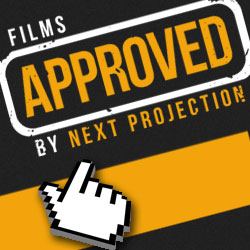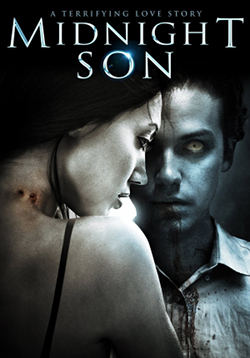Review: Dredd 3D (2012)
Cast: Karl Urban, Olivia Thirlby, Lena Headey
Director: Pete Travis
Country: USA
Genre: Action | Sci-Fi
Official Trailer: Here
Editor’s Note: Dredd 3D opens today, 9/21
Whoever said “There are no guilty pleasures, only guilty (or guilt-stricken) people,” obviously hasn’t seen or even heard of Dredd 3D, the latest reboot of a failed franchise starter, the 1995 science-fiction/actioner, Judge Dredd, that starred Sylvester Stallone as the helmet-less title character. Grittier, darker, and less intentionally comedic or parodic than its disappointing seventeen-year-old predecessor, Dredd 3D takes the title character’s authoritarian leanings to their ultra-violent, nihilistic extreme. The guilt, of course, comes from taking pleasure in the inventive manner in which Dredd carries out his “judge, jury, and executioner” mandate and the amoral ruthlessness in which criminals brutalize each other, innocent and not-so-innocent civilians, and law enforcement (Dredd is just one among many other similarly equipped, similarly disposed judges).
…Dredd 3D takes the title character’s authoritarian leanings to their ultra-violent, nihilistic extreme.
 We hear Dredd’s voice before we see him. He’s a disembodied voice introducing us the Dreddverse. In the semi-distant future, nuclear war has resulted in a vast, irradiated wasteland. The survivors huddled inside mega-cities. One such city, Mega-City One, stretches across the Eastern seaboard from New York to Washington, D.C. (or rather their remnants). Mega-City One’s population numbers more than 800 million souls, most of them trapped inside mega-blocks, massive concrete and steel structures that house tens of thousands of Mega-City One’s most destitute and most desperate. Unsurprisingly, crime gangs control vast territories inside mega-blocks. Judges represent the best of several bad-to-awful alternatives. Even with their brutal, uncompromising methods, judges can’t stop crime or slow it down. At most, they respond to 6% of all crimes.
We hear Dredd’s voice before we see him. He’s a disembodied voice introducing us the Dreddverse. In the semi-distant future, nuclear war has resulted in a vast, irradiated wasteland. The survivors huddled inside mega-cities. One such city, Mega-City One, stretches across the Eastern seaboard from New York to Washington, D.C. (or rather their remnants). Mega-City One’s population numbers more than 800 million souls, most of them trapped inside mega-blocks, massive concrete and steel structures that house tens of thousands of Mega-City One’s most destitute and most desperate. Unsurprisingly, crime gangs control vast territories inside mega-blocks. Judges represent the best of several bad-to-awful alternatives. Even with their brutal, uncompromising methods, judges can’t stop crime or slow it down. At most, they respond to 6% of all crimes.
When we finally meet the perpetually helmeted Judge Dredd (Karl Urban), he’s responding to a seemingly routine traffic violation, an erratically driven van. Dredd soon learns, however, that the van contains three violent felons and those felons don’t want to be captured or possibly executed. The scene functions both as the first set piece of many and as an indication of things to come, a mix of practical effects, stunts, and CG augmentation. It also offers the first glimpse of Slo-Mo, a synthetic drug that slows the user’s perception of time to 1% percent of normal. We don’t see Slo-Mo from a first-person POV, but we’re right there alongside a user as everything slows down to a mesmerizing, hypnotic level. Like every set piece that follows, the scene ends with an ultra-violent confrontation between Dredd and a sociopathic perp. This Dredd, while far less mythic and iconic than his 1995 incarnation, doesn’t hesitate to use excessive force to end a threat or carry out an execution of a convicted felon.
Dredd’s day isn’t done, however. It’s just beginning. Seconds after returning to the Hall of Justice, Dredd’s been saddled with a rookie judge, Cassandra Anderson (Olivia Thirlby). Anderson has been gifted (or cursed, depending on your perspective) with telepathic abilities. A borderline failure, the Chief Judge (Rakie Ayola), orders Dredd to take Anderson into the field for the remainder of the day. The Chief Judge gives Dredd the power to pass or fail Anderson. Dredd allows Anderson to make the first call, responding to a three-body homicide. What Dredd and Anderson don’t know is that they’ve walked into the central hub for the creation and distribution of Slo-Mo. The mega-block also houses the gang leader, Ma-Ma (Lena Headey), who controls the creation and distribution of Slo-Mo. In short order, Dredd, Anderson, and a material witness (and felon), Kay (Wood Harris), end up facing Ma-Ma’s gang and their supporters.
Like The Raid: Redemption released stateside earlier this year, Dredd 3D centers on the central character killing his way up a multi-story structure before he confronts the gang boss. It’s as simple and straightforward a plot, a plot that probably owes a great deal to videogames. That alone obviates the claim that Dredd 3D borrowed or ripped off The Raid: Redemption’s premise. The Raid: Redemption’s writer-director, Gareth Evans, is on twitter record saying both films were in production simultaneously, so neither stole from the other. Similarities aside, Dredd 3D doesn’t include long, drawn-out martial arts sequences. There’s very little hand-to-hand combat. It’s mostly firearm-based combat with the occasional aside to move the plot forward or to give Anderson a chance to flex her telepathic muscles.
Dredd 3D centers on the central character killing his way up a multi-story structure before he confronts the gang boss. It’s as simple and straightforward a plot, a plot that probably owes a great deal to videogames.
 Dredd 3D doesn’t give the title character a recognizable arc. That belongs to Anderson. As a rookie (shades of Training Day), Anderson starts off as inexperienced, naïve, even compassionate. Self-preservation, however, turns her into an efficient, if not entirely conscience-free killer like Dredd. It’s that tension, minor narratively and thematically, that gives Dredd 3D a nod toward substance, however shallow. It helps to humanize Dredd, a character whose authoritarian temperament and cold-blooded, almost robotic behavior may make him a hero to some, but alienate others. Dredd 3D certainly walks a fine line in that respect, but Dredd 3D won’t succeed or fail commercially based on Dredd’s characterization.
Dredd 3D doesn’t give the title character a recognizable arc. That belongs to Anderson. As a rookie (shades of Training Day), Anderson starts off as inexperienced, naïve, even compassionate. Self-preservation, however, turns her into an efficient, if not entirely conscience-free killer like Dredd. It’s that tension, minor narratively and thematically, that gives Dredd 3D a nod toward substance, however shallow. It helps to humanize Dredd, a character whose authoritarian temperament and cold-blooded, almost robotic behavior may make him a hero to some, but alienate others. Dredd 3D certainly walks a fine line in that respect, but Dredd 3D won’t succeed or fail commercially based on Dredd’s characterization.
It’ll succeed or fail based primarily, if not exclusively, on Dredd 3D’s set pieces and there, if nowhere else, moviegoers will get originality mixed in with the CG-aided blood and gore. While Dredd 3D pushes the R-rating to the limit, the heavy stylization, specifically the Slo-Mo effect that follows heads and bodies between torn apart, obviously kept it within the bounds of the MPAA’s rules and dictates. The gore-as-spectacle isn’t used for a deeper meaning beyond the “life is brutish, nasty, and short” in Mega-City One, but then again, it was never intended to do anything except create the requisite amount of shock, awe, and on more than twenty occasions, disgust. By the time, Dredd 3D has reached the foregone denouement, moviegoers won’t remember the characters or the story. They will, however, remember everything else.










 Review: House at the End of the Street (2012)
Review: House at the End of the Street (2012) Cult Pics and Trash Flicks: Vulgaria (2012)
Cult Pics and Trash Flicks: Vulgaria (2012) Review: End of Watch (2012)
Review: End of Watch (2012) Review: Dredd 3D (2012)
Review: Dredd 3D (2012) Yeonghwa: Korean Film Today: In Hong Sang-soo Country
Yeonghwa: Korean Film Today: In Hong Sang-soo Country



